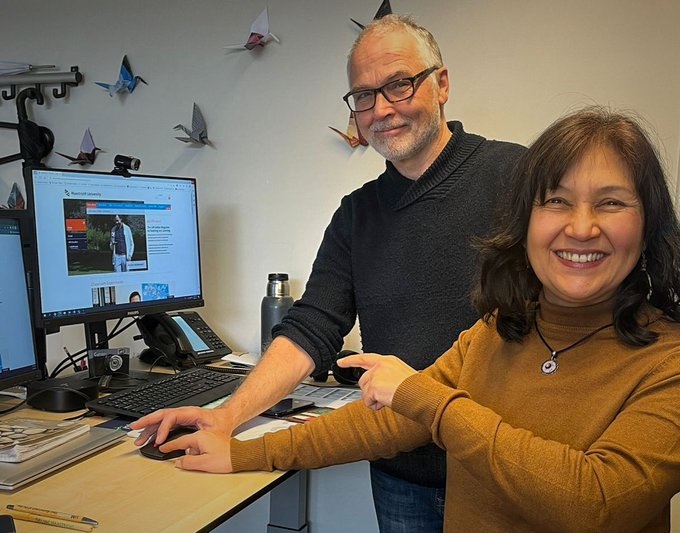Guidelines for authors: pitching & writing for edUMinded
edUMinded is the UM online Magazine on Teaching & Learning delivering views and articles from the Teaching & Learning community at Maastricht University to all education enthusiasts. It is a collegial collaboration where the EDLAB editorial team works directly with educators and researchers to publish articles for a broad audience.
Writing for edUMinded

What types of stories are we looking for?
The edUMinded editorial team at EDLAB seeks contributions related to one or more of the following perspectives:
- I did/made/tried/learned/found out about this, and here is why you should know about it.
- I read/saw/heard this, and here is why you should know about it.
- I think this, and here is why you should know about it.
- I know, researched (and possibly published about) this, and here is why you should know about it.
Who can write?
edUMinded accepts contributions from anyone who feels connected with the Teaching & Learning community of Maastricht University.
How to submit an article
The first step is to submit your idea via a simple “pitch” message: let us know what it is you want to write about. Please wait for our editors to accept the pitch and contact you before submitting your article.
How to pitch your idea
Being clear from the outset about the most important point(s) you want to cover will save you time and help us give you a quick, clear response to your pitch.
- Idea
What’s your question or article idea in one sentence (50-word limit)? You may use the perspective as a model for your sentence. - Key points
What are the key points you'd like to see covered? (100 word-limit) - Relevance
Explain your connection with the topic briefly and why this topic is relevant for the UM Teaching & Learning community. - Timeliness
Is this issue particularly relevant now, or looking ahead? Or are you suggesting this as a timeless 'explainer' of a commonly misunderstood issue?
Relevant now
Relevant in the future
Timeless ("Explainer")
Multimedia: Photos, videos, audio, graphs & more
We’re always looking for good photos, videos, audio, tables or graphs to bring stories to life. If you have any of those, mention them in your pitch.
What happens next?

Once the editorial team has reviewed your pitch, they will let you know what they think of your idea. You will always receive clear feedback.
If your pitch is accepted, the editor will contact you to discuss the article further, including issues like the word count, and how quickly you can write it. You can discuss the structure of your article with your editor. You’ll also agree on a deadline for a first draft.
Collaborative and Transparent editing
If, during the writing process, you’re not sure you can meet it, please let us know immediately. Our editorial process allows for collaborative and transparent editing: you can ask editors for advice, and they will provide you with constructive feedback. It is a collaborative editing process, so it’s important that you and your editor are happy that the final article is accurate and suitable for a broad, non-expert audience.
Final text approval
Before your article is published, the editors will send it back to you for approval. Please review the text, photos, captions and headline to ensure they’re all accurate. Authors must do a final approval before the article can be published.
Writing tips

Start strong: Grab the reader’s attention right from the start
- Use the first paragraph to grab the reader’s interest. Start with a short, sharp statement of the article’s essential facts in no more than two sentences. Explain why what you write about is new, relevant, or surprising.
- Readers want to know the Five Ws: who, what, where, when, why, and sometimes how.
- Make a brief sketch of your main points and stick to them. Put the most important information first. That allows readers to explore a topic to the depth that their curiosity takes them (not everyone reads to the end).
Headline tips
- Keep your headline simple and direct – it should be seven to ten words at most, with the most relevant and essential words at the start.
- Avoid puns and “smart” headlines unless it suits the story. Instead, aim for an accurate and engaging label that summarises the content.
- Aim to use active verbs, which add muscle and emphasise the “actor” in the story e.g., “Aspirin cuts cancer risk” or “WikiLeaks reveals flaws in new privacy laws”. Think of ways to distinguish your article from others. Is this new, or a first? Does it answer an important question or solve a puzzle?
- Would you read it? Remember, you are writing for people reading online. What keywords would you Google to find a story like yours? Try using those.
- Would you feel compelled to read beyond the headline or first sentence?
Tone and ‘Readability’
- Write with the goal of connecting with all members of UM’s Teaching & Learning community. Explain complex ideas. Don’t get too technical. Avoid jargon. Remember: what is common knowledge for you may be new territory for readers from another discipline or background. At edUMinded, we focus on ‘readability’ because we want to share your expertise and views with everyone – including young people and a big global audience whose first language isn’t always English.
- Provide a concise and accessible explanation of what you did/made/read/thought/researched that all members of the UM Teaching & Learning community can understand.
- Don’t leave implicit why what you describe is relevant for others at UM: make it explicit, argue for your assumption that it is and if possible, provide examples of how it is relevant for others.
- Aim for 600-800 words, and use not more than 1500. Use UK English according to UM communications guidelines
- Perform a spelling/grammar/readability check before submitting the article (Flesch-Kinkaid Reading Grade Level, Grammarly, etc.)
Referencing
If you make contentious statements, please back them up with research. The same goes for facts and figures; e.g. if you’re saying 28% of xxx are obese. We reference with online links that readers can click on, preferably to full research papers, but to abstracts or news stories if the full paper isn’t available. We’ll help you add those in. But we can’t use footnotes or endnotes. Ideally, please put your reference/web link in brackets beside each statement to be referenced. (DOIs)
Be parsimonious with references.
How to end
The last sentence of your article should summarise or reiterate the point made in your opening paragraph. Or you can raise the question of what should happen next. Check if you’ve stayed within the agreed word count, typically 600-800 words and no more than 1500 words.
Where to find more writing tips:
- https://www.maastrichtuniversity.nl/blogger-dos-and-donts
- https://www.maastrichtuniversity.nl/support/communications-guide/writing/writing-internet#guidelines
- https://www.maastrichtuniversity.nl/about-um/faculties/faculty-law/research/how-promote-your-research/step-2-create-%E2%80%98how-%E2%80%99-guides/guide
We look forward to publishing you!
The edUMinded editorial team
Oscar van den Wijngaard
Sueli Brodin